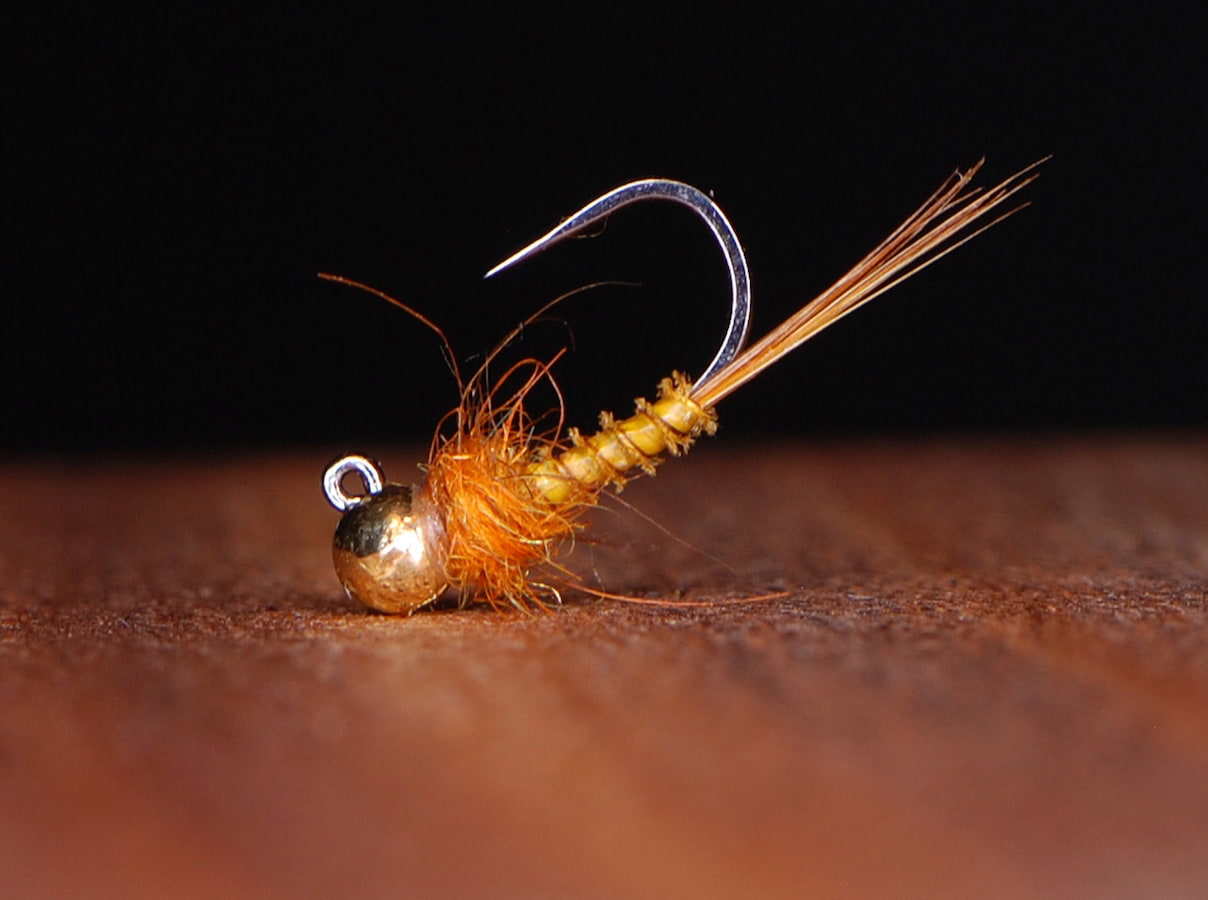Ask MidCurrent: Are Barbless Hooks Pointless?

Tie and image by Freddy Block
Question: I’ve gone to mostly barbless flies and my lost-fish rate has rocketed because of it. Now I’m hearing that barbless hooks don’t make much difference for fish survival. I want to do the right thing, but I also want to bring fish to the net. Are barbless hooks truly better for the fish?
Answer: We totally get the conundrum. For years now, fly fishers have debated the merits of barbless hooks when it comes to their impact on fish survival rates in catch-and-release scenarios. Most fly anglers are at least somewhat conscientious about the health and well-being of the finned creatures we pursue. We want to use responsible conservation practices. At the same time, we don’t want a fish to come unbuttoned before the net is under it. Adding to confusion about what is best is the question of whether barbless hooks truly are better for the fish. Are we losing fish for no reasons outside of a patting ourselves on the back for doing “what’s right” and a bunch of virtue signaling to others? The answer is complex, with various factors to consider beyond just the presence or absence of a barb.
The Case for Barbless: Reduced Trauma and Improved Survival Rates
The primary argument in favor of barbless hooks centers on the reduced trauma they cause to fish during both hook penetration and removal. Proponents argue that barbless hooks create smaller, less damaging wounds, which in turn lead to improved survival rates for released fish. This theory is supported by several studies that have shown lower post-release mortality rates for fish caught on barbless hooks compared to those caught on barbed ones.
Conflicting Research: A Closer Look at the Evidence
However, the reality is not as straightforward as it might initially appear. While some research indicates a significant difference in mortality rates between barbed and barbless hooks, other studies suggest that the disparity may be less pronounced than previously thought. This inconsistency in findings has led to ongoing discussions within the angling community about the true effectiveness of barbless hooks in promoting fish welfare.
Beyond the Barb: Other Factors Influencing Fish Survival
Catch-and-Release Technique: A Critical Component
One aspect to consider is the technique used during the catch-and-release process. Many experts argue that the speed and care with which a fish is unhooked and returned to the water play a more significant role in its survival than the type of hook used. Proper handling techniques, such as keeping the fish in the water as much as possible, using wet hands to minimize damage to the protective slime coat, and reducing overall handling time, can greatly improve a fish’s chances of survival regardless of hook type.
Hook Size and Species-Specific Considerations
The size of the hook is another important factor that can influence fish survival rates. Some studies suggest that smaller hooks, whether barbed or barbless, may cause less trauma to the fish. This finding has led some anglers to focus more on hook size selection rather than solely on the presence or absence of a barb.
It’s also worth noting that the effectiveness of barbless hooks can vary depending on the species of fish being targeted and the specific fishing conditions. Some anglers report that barbless hooks are particularly beneficial when fishing for certain species known for their delicate mouths or when targeting smaller fish. However, in situations where larger, more aggressive fish are the primary target, the advantages of barbless hooks may be less pronounced.
The Angler’s Dilemma: Landing Rates and Fishing Satisfaction
The debate surrounding barbless hooks extends beyond just fish survival rates. Many anglers who have switched to barbless flies report a significant increase in their “unbutton” rate, meaning they lose more fish during the fight. This increase in lost fish can be frustrating for anglers who value bringing their catch to the net, not just for the satisfaction of landing a fish but also for the opportunity to admire and potentially photograph their catch before release.
Skill Development and the Barbless Challenge
Proponents of barbless hooks argue that this increased challenge is part of the appeal and can lead to improved angling skills over time. They suggest that using barbless hooks requires anglers to maintain constant tension on the line and perfect their fighting technique, ultimately making them better fishermen. However, critics contend that repeatedly losing fish can be disheartening and may actually lead to more stress on fish populations if anglers feel compelled to fish longer or harder to compensate for lost catches.
Innovations in Hook Design: Bridging the Gap
The manufacturing and design of fishing hooks have also evolved in response to this debate. Many hook manufacturers now offer barbless options or hooks with micro-barbs, which are designed to provide a compromise between barbed and barbless designs. These micro-barbed hooks aim to offer improved hook retention while still being easier to remove than traditional barbed hooks.
Regulations and Conservation Policies: Shaping the Barbless Landscape
Environmental regulations and fishery management practices have also played a role in shaping the barbless hook debate. Some fishing areas and conservation zones have implemented regulations requiring the use of barbless hooks, particularly in catch-and-release only waters. These policies are based on the premise that barbless hooks are less harmful to fish populations and can help maintain healthy fisheries.
The Scientific Perspective: Ongoing Research and Debate
Despite these regulations, the scientific community remains divided on the true impact of barbless hooks on fish survival rates. Some researchers argue that while barbless hooks may cause less immediate damage, the difference in long-term survival rates between fish caught on barbed versus barbless hooks may be negligible when proper catch-and-release techniques are employed.
A Holistic Approach to Conservation in Fly Fishing
For anglers grappling with this issue, it’s important to consider the broader context of conservation in fly fishing. While the choice between barbed and barbless hooks is significant, it’s just one aspect of responsible angling practices. Other factors, such as proper fish handling, using appropriate tackle for the target species, and adhering to fishing regulations, all contribute to the overall health of fish populations and the sustainability of the sport.
Making an Informed Choice: Balancing Ethics and Enjoyment
Ultimately, the decision to use barbless hooks comes down to a personal choice that balances ethical considerations, fishing preferences, and local regulations. Many anglers choose to carry both barbed and barbless flies, selecting their gear based on the specific fishing situation and any applicable rules.
The Future of Fly Fishing: Embracing Responsible Practices
As research in this area continues to evolve, it’s important for anglers to stay informed about the latest findings and best practices in fish conservation. Engaging in discussions with fellow anglers, participating in local conservation efforts, and supporting scientific research can all contribute to a better understanding of how our fishing practices impact aquatic ecosystems.
Finding Balance in the Barbless Debate
While the debate over whether barbless hooks are truly better for fish continues, there is a growing consensus that they can be a valuable tool in promoting fish welfare, especially when combined with proper catch-and-release techniques. Anglers who choose to use barbless hooks may face increased challenges in landing fish, but many find that the potential benefits to fish survival and the development of their angling skills outweigh these difficulties. As with many aspects of fly fishing, the key lies in finding a balance between enjoying the sport and acting as responsible stewards of the natural resources we cherish.











